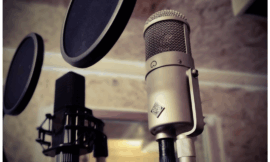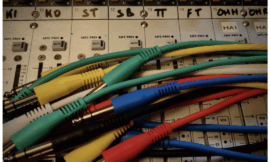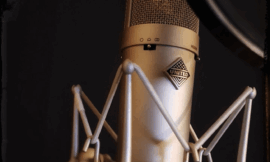Welcome back to our series on home recording for musicians. In this post, we’ll focus on recording bass at home, providing you with simple techniques to achieve a great sound that can be professionally mixed at Jeddraudio Recording Studio.
Best Practices for Recording Bass at Home
Direct Input (DI) Recording
Recording your bass directly into your audio interface is a straightforward and effective method for capturing a clean and uncolored sound.
- Use a DI Box: If your audio interface doesn’t have a dedicated DI input, use a direct injection (DI) box to connect your bass to the interface. This helps to match impedance and reduce noise.
- High-Quality Cables: Use high-quality instrument cables to ensure a clean and noise-free signal. High quality doesn’t mean expensive, it means good connectors and no noises!
- Check Levels: Set the input level on your audio interface to ensure a strong and clean signal without clipping.
Amplifier Recording
If you prefer the sound of your bass amplifier, you can record it using a microphone.
- Microphone Selection: Use a dynamic microphone, such as a Shure SM57, for recording your bass amp. Dynamic microphones are durable and can handle the low frequencies and high sound pressure levels produced by bass amplifiers.
- Microphone Placement: Position the microphone slightly off-center of the speaker cone, a few inches away from the grille. Experiment with different positions to find the tone that works best for your sound.
- Room Acoustics: Consider the acoustics of the room and use blankets or foam panels to minimize reflections and control the sound.
Performance Tips
- Play to a Metronome: Use a metronome or click track to ensure timing accuracy and consistency in your performance. This is especially important when recording at home, as it helps to maintain a tight and professional sound.
- Record Multiple Takes: Capture several takes of your performance to have options during the mixing stage. This allows you to choose the best take or comp different takes for a flawless performance.
- Monitoring: Use headphones to monitor your performance and ensure that you’re playing in time with the rest of the tracks. This helps to maintain a tight and cohesive sound.
Conclusion
Recording bass at home can be a straightforward and rewarding process. By using direct input recording or capturing the sound of your bass amplifier with a microphone, you can achieve a great sound that is ready for professional mixing. Keep things simple, focus on your performance, and follow these best practices to create high-quality bass tracks at home.
Stay tuned for the next post in our series, where we’ll explore guitar recording made easy.





